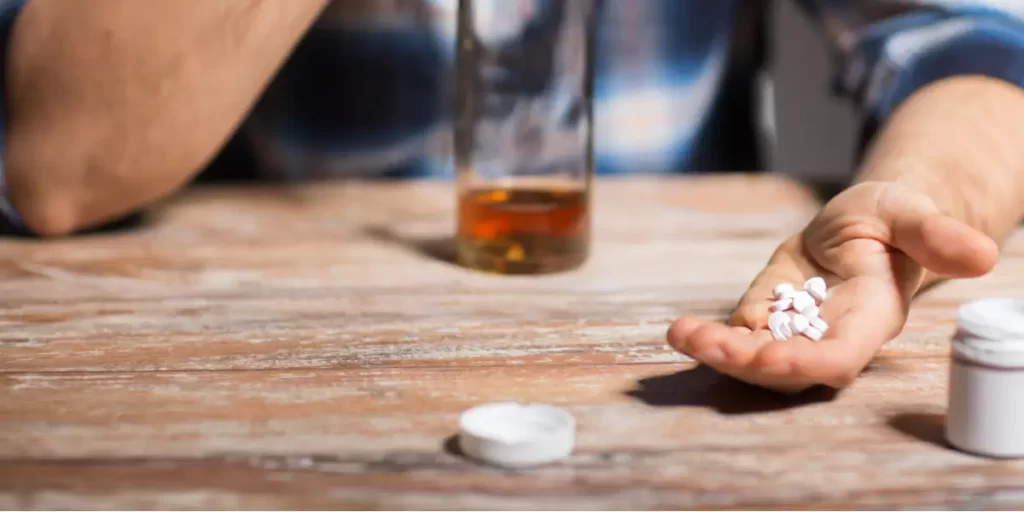What are the Risks of Mixing Ultram and Alcohol
Written by Thomas Christiansen
& Medically Reviewed by Dr. Conor Sheehy, PharmD, BCPS, CACP
Medically Reviewed
Up to Date
Last Updated - 6/17/2022
View our editorial policy
Mixing Ultram and alcohol is dangerous and can have negative impacts on health. Ultram is the brand name for the prescription opioid medication, tramadol. Ultram is prescribed to treat moderate to severe pain.
For many years, Ultram medication was considered an “opioid-like” medication and was not a controlled medication. The medical community has revisited this thinking and since Ultram works the same as other opioid medications, it is now generally considered an opioid.
The Drug Enforcement Administration (DEA) recently reclassified Ultram as a Schedule IV medication, meaning it has a medical use, but the potential for addiction and abuse is present.
Having a few drinks per week is considered fine for most people, but that drinking should never be mixed with Ultram or other opioid prescription medications.
Why Do People Mix Ultram and Alcohol?
Most commonly, people mix Ultram and alcohol by mistake. Ultram prescriptions come with a warning label not to mix with alcohol, but mistakes can happen.
A regular dose of Ultram with a few drinks is not harmful to most people, but heavy drinking with Ultram may be concerning. People who mixed Ultram and alcohol by mistake should consider calling their doctor or pharmacist.
Some may also mix Ultram and alcohol together intentionally to get “high.” Alcohol and Ultram intensify the depressant effects of each other, causing increased effects beyond what each drug might produce on its own.
Mixing Ultram and alcohol is dangerous because it increases the potential of overdose, addiction, and harm to health.
Effects of Combining Alcohol and Ultram
Drinking alcohol while taking Ultram will intensify the effects of alcohol. Ultram makes the effects hard to predict; for example: making one drink feel like three.
If someone drinks their “normal” amount of alcohol while taking Ultram, they run the risk of overdosing with just a few drinks.
Side effects intensify when mixing Ultram and alcohol, and the chance of side effects that increase central nervous system depression increase exponentially. Possible side effects of mixing Ultram with alcohol include:
- Dizziness
- Drowsiness
- Impaired ability to control muscles
- Memory problems
- Slow breathing
- Trouble concentrating
- Unusual behavior
Risks of Mixing Ultram and Alcohol
Overdose is the most serious risk of mixing Ultram and alcohol. In the case of an overdose, the body’s nervous system shuts down because Ultram and alcohol both slow down messages sent between cells.
An overdose carries the risk of death because a person can stop breathing or fall into a coma. They may experience seizures that cause damage to brain cells.
Signs of an opioid or alcohol overdose may include:
- Breathing is slow or stops completely
- Face and skin become very pale
- Skin cold and clammy to the touch
- Their muscles go limp
- They are unresponsive and cannot be woken up
- They may vomit or make gurgling noises
The long-term risk of mixing Ultram and alcohol is the increased risk of abuse and addiction. Each substance on its own has a potential for abuse, but when mixed that risk increases. The risk of addiction become so much higher because polysubstance abuse significantly increases the effects of a “crash.”
The cycle of addiction is hallmarked by euphoria, crash and craving. Euphoria is created by substance abuse, which leads to a “crash” or feeling uncomfortable symptoms for a few days after use. Once someone makes the decision to ease their “crash” by taking more of a substance, there is a chance of the addition cycle starting. Abusing more than one drug at a time worsens both the crash and the associated cravings.
Liver Damage
Ultram is metabolized by cells in the liver. On its own, it does not cause liver damage. Less than 1% of people who take Ultram by itself experience any form of liver damage.
Alcohol is known to cause both short- and long-term liver damage, and this can be made worse by mixing it with opioid medications like Ultram.
Treatment for Ultram and Alcohol Addiction
Treatment for polysubstance addiction such as Ultram and alcohol starts in a substance treatment center. Upon entry into a program, if someone is still using one or more substances, they may undergo medical detox. Medical detox is the process of supporting a person as their body metabolizes the drug.
Detox is followed by treatment, which can happen in an inpatient or outpatient setting. Inpatient is the more intensive treatment option because it happens in a live-in facility. An outpatient treatment program is one where a person lives at home and continues to go to work or school while they receive treatment.
Upon completion of treatment, the person enters aftercare, which may include relapse prevention, additional therapy and domiciliary care.
Contact The Recovery Village Ridgefield to speak with a representative about how professional addiction treatment can help address a substance use disorder and mental health conditions. Take the first step toward a healthier future, call today.
Sources
Harrington, Thomas. “2014 – Final Rule: Placement of Tramadol Into Schedule IV.” U.S. Department of Justice Drug Enforcement Administration: Diversion Control Program. June 27, 2014. Accessed August 29, 2019.
National Institute on Alcohol Abuse and Alcoholism. “Harmful Interactions.” Accessed August 23, 2019.
View Sources
Harrington, Thomas. “2014 – Final Rule: Placement of Tramadol Into Schedule IV.” U.S. Department of Justice Drug Enforcement Administration: Diversion Control Program. June 27, 2014. Accessed August 29, 2019.
National Institute on Alcohol Abuse and Alcoholism. “Harmful Interactions.” Accessed August 23, 2019.
Authorship






